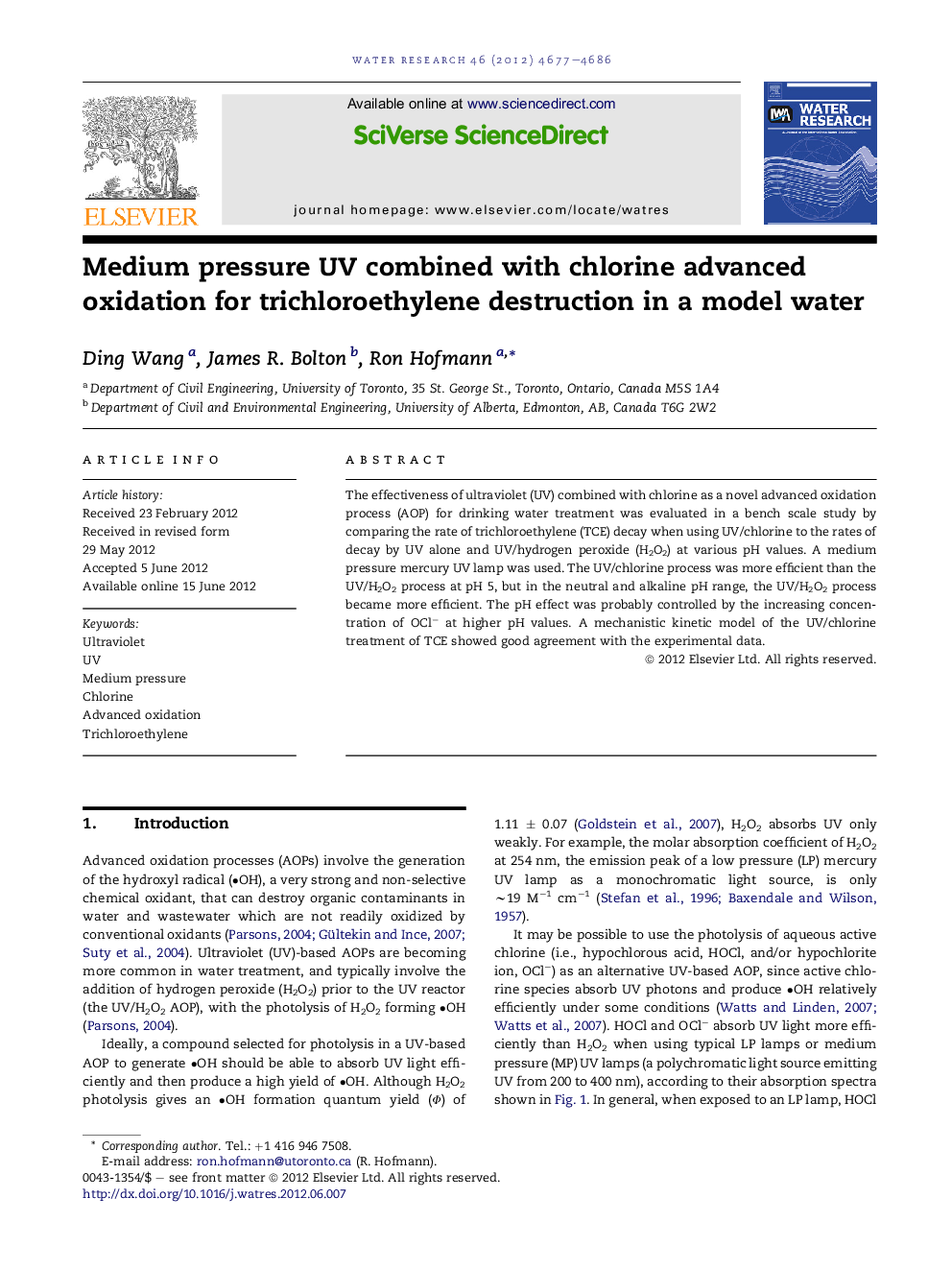| کد مقاله | کد نشریه | سال انتشار | مقاله انگلیسی | نسخه تمام متن |
|---|---|---|---|---|
| 4482987 | 1316875 | 2012 | 10 صفحه PDF | دانلود رایگان |

The effectiveness of ultraviolet (UV) combined with chlorine as a novel advanced oxidation process (AOP) for drinking water treatment was evaluated in a bench scale study by comparing the rate of trichloroethylene (TCE) decay when using UV/chlorine to the rates of decay by UV alone and UV/hydrogen peroxide (H2O2) at various pH values. A medium pressure mercury UV lamp was used. The UV/chlorine process was more efficient than the UV/H2O2 process at pH 5, but in the neutral and alkaline pH range, the UV/H2O2 process became more efficient. The pH effect was probably controlled by the increasing concentration of OCl− at higher pH values. A mechanistic kinetic model of the UV/chlorine treatment of TCE showed good agreement with the experimental data.
Figure optionsDownload high-quality image (104 K)Download as PowerPoint slideHighlights
► MP UV was less efficient at destroying TCE than UV combined with chlorine or H2O2.
► UV/chlorine was more efficient for TCE destruction than UV/H2O2 at pH 5.
► UV/chlorine was less efficient for TCE destruction than UV/H2O2 at pH 7.5 and 10.
► A kinetic model for TCE degradation agreed well with the experimental data.
► With more scavengers present, UV/chlorine was predicted to become more competitive.
Journal: Water Research - Volume 46, Issue 15, 1 October 2012, Pages 4677–4686